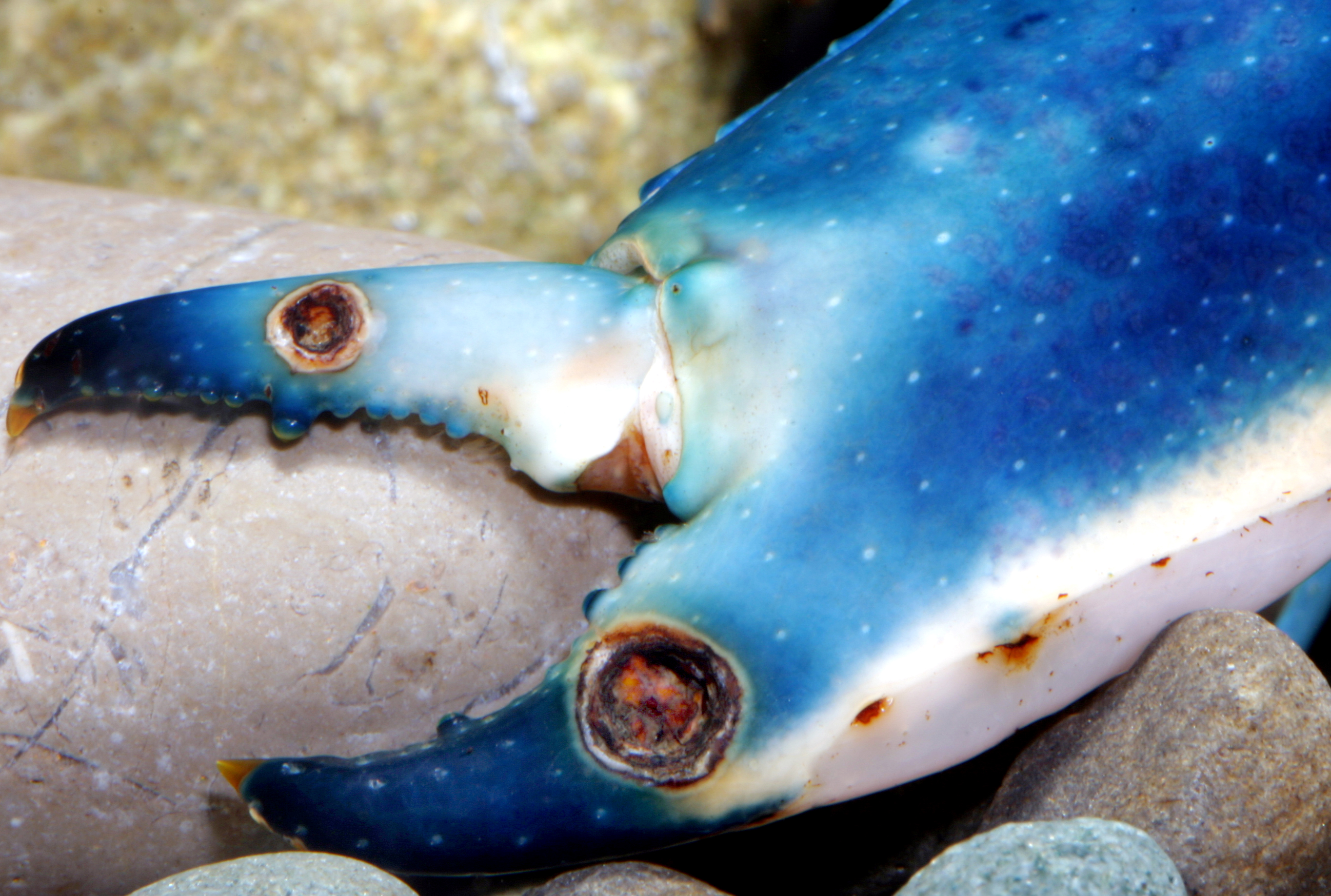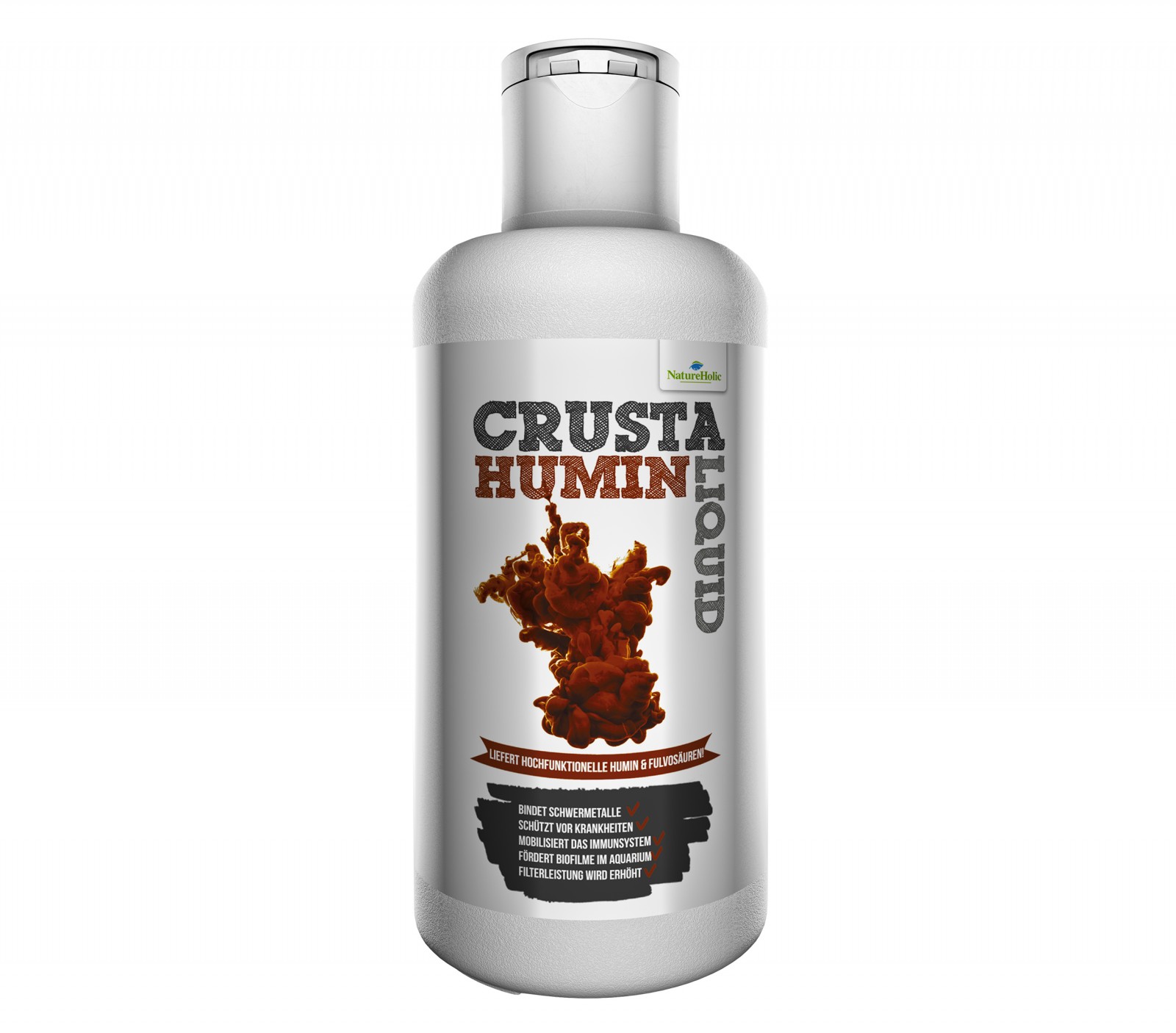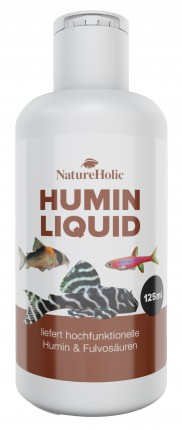Burn spot disease or rust spot disease in shrimp, crabs and prawns
Suddenly you notice a brown spot on the carapace of a shrimp, which was not there before, in the case of the crayfish in the aquarium a spot on the carapace looks strangely deepened and also here the carapace tissue turns rusty brown, and in the case of the crab in the terrarium a red-brown spot spreads on the claw, which looks like sunken - colloquially, such phenomena are called rust spot disease or burn spot disease, because these reddish brown to black spots just look as if they were burned or rusted.

In which animals does rust spot disease occur?
Burn spot disease, also called rust spot disease, can occur in all tank-bearing decapod crustaceans, including our shrimp, crayfish, dwarf crayfish and crabs in aquariums, aquaterrariums and terrariums.

So what exactly is rust spot disease?
Actually, rust spot or burn spot is not an actual disease, but basically a defensive reaction of the immune system of the shrimp, crab or crab. If the shell is injured either by a mechanical action or by germs, the crab deposits a brown-black pigment as a defense against germs: Melanin. Melanin inhibits the growth of germs. In this way, tissue that has been attacked or injured by bacteria or fungi is separated from healthy tissue so that the germs cannot advance any further. Also, for example, in the case of severed limbs during a moult or after a fight, it is easy to observe, especially in larger crabs and shrimps, that the fracture becomes somewhat brownish over time.
What do the rust spots look like?
The areas affected by rust spot disease or burn spot disease are orange, brown or even almost black due to the storage of melanin. The edge of the affected areas is often reddish to orange. This is due to the presence of precursors of melanin in the tissue, which have just this reddish coloration. If the tissue is infected with chitin-dissolving bacteria and the infection is more advanced, the spots may also be slightly to severely sunken, and in bad cases a small or even larger hole may be visible in the carapace of the affected cancer. The size of the spots also varies - from a few millimeters to about a centimeter in size. Of course, the size of the affected animal is always decisive - while a one-centimeter rust spot on a shrimp is already a lot, so that the disease can then already become life-threatening, a spot of the same size on a large crayfish or crab is not quite as dangerous.
Pathogens that can cause rust spot disease
In most cases, the pathogens responsible for the reddish to almost black spots are a mixture of different germs. Typically, there is often an infection with chitin-dissolving bacteria, which is then joined by fungi. The pathogens use the smallest injuries of the shrimp or crab shell, in which they settle and then damage the tissue. Very often the pathogens of burn spot disease or rust spot disease are always present in the aquarium, they also very often only settle on animals that are weakened either by unfavorable environmental conditions such as unsuitable water values or a high organic load, by injuries or by stress, so it is often a secondary infection.
Course of rust spot disease
There are subacute courses in which the rust spots do not rapidly increase in size or depth. In this case, the encapsulation mechanism has worked well, and after the next moult, the previously diseased area is back as it should be. This is the end of the disease for the affected crab, shrimp or crab. Fortunately, this is very often the case.

Acute course of the disease
Unfortunately, however, it can also happen that the germs are so aggressive that the encapsulation by melanization does not work and that the infection spreads to other tissues. If the organs are affected because the germs reach the inside of the body, the crab, shrimp or crab can no longer be saved. If the infection has already penetrated deep into the tissue, a cure becomes very difficult.
Tracking down the causes
If animals with rust spots or burn marks appear frequently in the aquarium, you as the keeper must ask yourself the question of the cause. Are the animals in suitable water? Is the water hardness OK for the type of shrimp being kept? Is it possible that there is a high nitrate value in the water or that the water is otherwise organically heavily polluted? Are the animals fed well and balanced? Do the animals have stress, for example, because they are socialized with fish that chase them?
Treat rust spot disease or burn spot disease
A sustainable improvement of the keeping conditions like regular water changes with adapted water, a balanced feeding adapted to the needs of the shrimps, crabs or shrimps and an avoidance of stress will surely bring the breakthrough here.
Humic substances support and help
In shrimp and crab keeping, the addition of humic substances and tanning agents such as Crusta Humin Liquid from NatureHolic has proven to be effective both for the prevention and treatment of rust spot disease or burn spot disease in the aquarium. These substances have a very positive effect on the mucous membrane and shell in crayfish, shrimp and aquatic crabs, and they also act against bacteria and fungi.
Also with natural remedies such as sea almond tree bark, sea almond tree leaves, alder cones or cinnamon sticks you can support the animals well and even counteract an outbreak of burn spot disease or rust spot disease.





